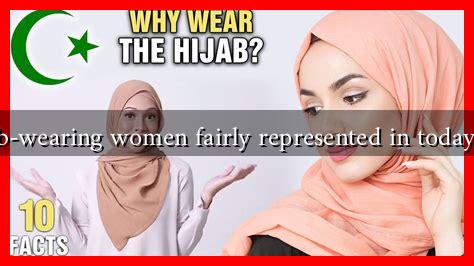-
Table of Contents
Are Hijab-Wearing Women Fairly Represented in Today’s Media?
The representation of hijab-wearing women in media has become a significant topic of discussion in recent years. As societies become more diverse, the portrayal of different cultures and religions in media is crucial for fostering understanding and acceptance. This article explores the current state of representation of hijab-wearing women in various media forms, including television, film, and advertising, while examining the implications of these portrayals on societal perceptions.
The Current Landscape of Representation
Media representation plays a vital role in shaping public perceptions and attitudes. For hijab-wearing women, the portrayal often oscillates between stereotypes and tokenism. While there have been strides toward more inclusive representation, significant gaps remain.
- Underrepresentation: Studies indicate that hijab-wearing women are often underrepresented in mainstream media. A report by the Media Diversity Institute found that only 1.5% of characters in popular films are Muslim, and even fewer are depicted wearing hijabs.
- Stereotyping: When hijab-wearing women do appear, they are frequently portrayed through a narrow lens, often as oppressed or submissive. This stereotype fails to capture the diverse experiences and identities of hijab-wearing women around the world.
- Tokenism: In some cases, hijab-wearing characters are included as a form of tokenism, serving to fulfill diversity quotas without genuine representation or depth in storytelling.
Positive Developments in Media Representation
Despite the challenges, there have been notable advancements in the representation of hijab-wearing women in media. These developments reflect a growing awareness of the importance of authentic representation.
- Increased Visibility: Shows like “Ramy” and “Ms. Marvel” feature hijab-wearing characters who are multi-dimensional and relatable. These portrayals challenge stereotypes and provide a more nuanced view of Muslim women.
- Social Media Influence: Platforms like Instagram and TikTok have allowed hijab-wearing women to share their stories and experiences directly, bypassing traditional media gatekeepers. Influencers such as Dina Tokio and Habiba Da Silva have garnered large followings, promoting positive narratives around hijab-wearing women.
- Fashion and Advertising: Brands like Nike and H&M have launched campaigns featuring hijab-wearing athletes and models, showcasing their commitment to inclusivity. The Nike Pro Hijab, for instance, was designed specifically for Muslim women athletes, highlighting their needs and aspirations.
The Impact of Representation on Society
The way hijab-wearing women are portrayed in media has far-reaching implications for societal attitudes and perceptions. Positive representation can lead to greater acceptance and understanding, while negative portrayals can perpetuate stereotypes and discrimination.
- Challenging Stereotypes: Authentic representation can help dismantle harmful stereotypes, fostering a more inclusive society. When audiences see hijab-wearing women in diverse roles, it challenges preconceived notions and promotes empathy.
- Empowerment: Positive portrayals can empower hijab-wearing women by validating their experiences and identities. Representation in media can inspire confidence and encourage women to embrace their cultural and religious identities.
- Influencing Policy: Media representation can also influence public policy and discourse. As more hijab-wearing women are depicted positively, it can lead to increased advocacy for their rights and recognition in various sectors.
Conclusion
While there have been significant strides in the representation of hijab-wearing women in media, challenges remain. Underrepresentation, stereotyping, and tokenism continue to hinder authentic portrayals. However, the emergence of diverse narratives and the influence of social media are paving the way for more inclusive representation. As society continues to evolve, it is essential for media creators to prioritize authentic storytelling that reflects the rich tapestry of experiences among hijab-wearing women. By doing so, we can foster a more inclusive and understanding world.
For further reading on media representation and its impact, you can explore resources from the Media Diversity Institute.




